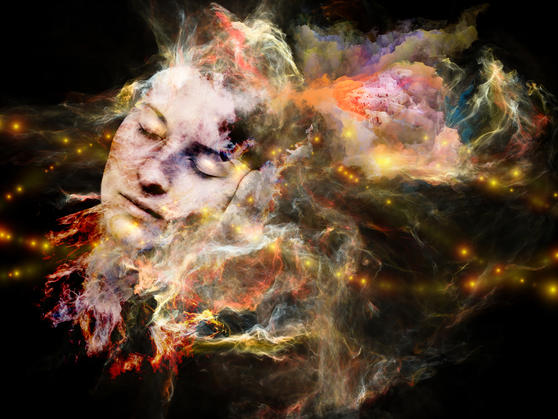
This is the fifth in my new weekly (every Friday) series of blog posts ‘For Newbies’, in which I attempt to outline the basic practices and terminology of shamanism in as clear and easy to understand prose as I can.
This one is about the sacred plant medicine, Ayahuasca. I’m going to split this article into two and conclude next week, as I have found that there is so much to talk about! This week, I’ll talk about what it is and whom you should take it with. Next week, I’ll talk about what to expect in a typical ceremony and what might happen when you take it.
I don’t want to take drugs. Can I still follow the shamanic path?
Of course! It’s a common misconception that shamans around the world take mind-altering substances, the vast majority just use a drumbeat (see my previous blog Journeying For Newbies) to enter alternate realities, or to commune with spirits.
What exactly is Ayahuasca?
The name ‘Ayahuasca’ is derived from the Quechan words ‘aya’, meaning spirit or soul, and ‘huasca’, meaning ‘vine’. It is also known as the ‘vine of the dead’ and the ‘vine of the soul’.
The Ayahuasca brew is made from the Banisteriopsis caapi (ayahuasca) vine and Psychotria verdis (chacruna) leaf. Interestingly, the DMT is actually present in the chacruna leaf but it is only activated in the brain through the use of the ayahuasca vine, which counters our natural DMT inhibitors. So, in other words, the Ayahuasca vine is actually the facilitator of DMT, not its source. You’ve lost me.
What’s DMT?
‘DMT’ or, if you want to get technical, ‘N,N-Dimethyltryptamine’, is a naturally occurring hallucinogenic chemical found in both plants and animals. Dr Rick Strassman in his superb book ‘DMT: The Spirit Molecule: A Doctor’s Revolutionary Research into the Biology of Near-Death and Mystical Experiences’ points out that DMT is not treated in the same way as other hallucinogens – effectively the molecule is ‘welcomed’ by the brain. It is actually manufactured in the brain, which might indicate that it plays some role in healthy brain function.
Could I be harmed?
Generally not from DMT itself. A lethal dose of DMT is estimated at 20 times the typical dose given during an Ayahuasca ceremony. However, its interaction with the serotonin system means you should not combine it with other drugs, particularly: SSRI’s (like Prozac); antihypertensives (high blood pressure medicines); appetite suppressants (diet pills); asthma medication; antihistamines; central nervous system depressants; or antipsychotics. Illegal or recreational drugs should never be taken in combination with DMT.
Some westerners are disappointed when they don’t have a hallucination, which is perfectly possible, several people I know experienced nothing and my own Ayahuascheros said that he, himself, had not experienced anything until his third healing ceremony. Tourists can be impatient, however, and this has led some unscrupulous retreat hosts to add more powerful and more toxic hallucinogens (e.g. datura) to the brew, which can have deadly consequences. Please do your research and pick your Ayahuascheros carefully.
What’s an ‘Ayahuascheros’?
The Ayahuascheros is a shaman who is trained in the facilitation of ayahusca within the context of a sacred, healing ceremony. They do much more, however, than just make the brew you drink. They guide participants through the process and chant their own healing songs. Usually they will have extensive training as healers and in working with plant medicine but I warn you now that I have seen courses advertised online which claim to train Ayahuascheros in just 3 weeks, so please do your homework! You will find reports online of Brujos (witches) masquerading as Ayahuascheros with the intention of stealing tourists’ energy or ‘power’. I write this, not to scaremonger but to stress that taking this plant medicine is an extraordinary process and one you should do safely and in the presence of an expert healer.
Where can I take Ayahuasca?
Not, as things stand, in this country (UK). Internationally, DMT is a class 1 drug so it is highly restricted. In most countries (including the UK) it is not technically illegal to possess ‘chacruna’ leaves, just any DMT-containing preparation you make from them but it’s a grey area. Even DMT’s use in research is absurdly curtailed. Governments seem to have great fears about hallucinogens, as evidenced by their becoming a scapegoat to subjugate the counter-culture movement in the 60’s and 70’s. I suppose governments don’t want free-thinking citizens who might start questioning them too much!
Peru has a long traditional history of Ayahuasca use and it is legal to use and possess it there. I would always suggest taking it at a retreat in Peru and one that you have carefully researched.
Apart from the legal situation, why do I have to travel all the way to Peru?
I’ve seen retreats advertised in European countries. What Dr. Strassman found was that the context was as important as the DMT itself. He concluded that there was a great difference in administering DMT in a clinical setting and in a therapeutic setting. What I mean is, you can take DMT anywhere you choose but you will not get the same experience as those who are led by an authentic Ayahuascheros in a retreat, which grows the sacred vine in its grounds.




